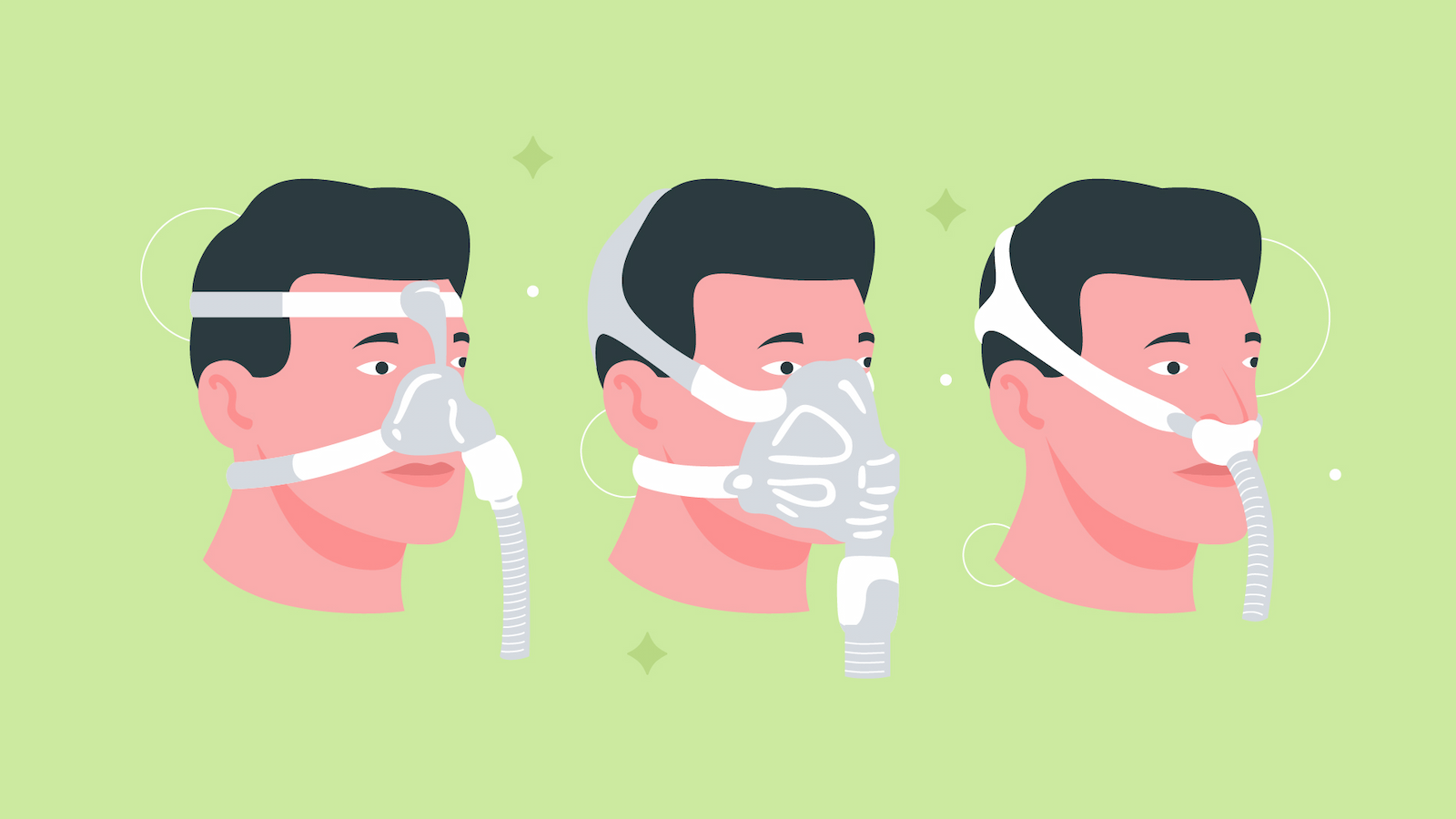A look at the important considerations when determining the best mask for your needs

Finding the right CPAP mask is one of the most critical factors to PAP therapy success.
A mask that suits your face, sleep position, and personal preferences will provide a more pleasant experience from a comfort front. If you’re more comfortable, you’ll be less likely to avoid using your mask and see more consistent benefits.
From a performance perspective, mask design has one of the most significant impacts on whether your mask stays in place, seals nicely, and can provide the pressure required by your prescription.
With so many considerations, how do you know where to start? In this guide, we’ll take a brief look at the broader factors to keep in mind when choosing a CPAP mask before diving deeper and making recommendations on mask styles and designs based on your sleeping position.
An Array of Options: A List of Mask Considerations
There isn’t a single best CPAP mask model or even a single best CPAP mask design for everyone. Ultimately, the best mask for you will be a personal choice influenced by a long list of factors.
Before we dive into how your sleeping position might influence mask choices, we wanted to provide a brief overview of other considerations you should keep in mind alongside how you sleep.

While no one factor will decide everything for you, understanding what to keep in mind can help speed up the process of finding the perfect CPAP mask and allow you to try new models or designs with confidence.
Machine Compatibility
Masks are largely universal these days, connecting to a wide range of CPAP machines and hoses to provide convenience and flexibility in choosing CPAP accessories and maintaining your equipment. However, if you use a machine that requires specialized parts, be sure to check for mask compatibility as a starting point to avoid wasting time and effort filtering through incompatible mask options.
If you’re unsure, consult your machine’s manual or talk to your CPAP supplier to confirm any limitations or compatibility concerns to keep in mind.
Size Options
Within a specific model or design, you’ll often find multiple sizes available. Some manufacturers also make specialized size lines for women’s faces or for broad faces to help provide a better fit.
As mask fit is everything when it comes to preventing leaks and ensuring the mask remains in place while you sleep, don’t hesitate to double-check measurements or try multiple sizes to ensure you’re using the optimal size mask for your facial structure.
Your Doctor’s Recommendation
You won’t be the first sleep apnea case your doctor diagnoses. While you know yourself better than anyone else, your doctor is likely a close second—at least when it comes to your physiology and health.
As such, this makes them an ideal source for mask design advice. If you’re not sure what the best CPAP mask for your needs might be, there’s a strong chance your doctor or sleep specialist can help limit your list of candidates to a few strong options.
Prescription Details
Some mask designs are better for high pressure than others. So be sure to compare the pressures recommended for your PAP therapy to the mask design to ensure a solid seal and avoid issues with leaks or reduced benefits.
Headgear Design
Apart from the overall mask design and size, CPAP mask headgear is one of the big factors you’re likely to notice regarding fit and comfort. CPAP masks rely on a lot of little factors lining up well to provide optimal performance. Headgear helps to keep the mask firmly in place, assisting in placement and seal levels.
However, it’s also something that will significantly impact comfort. If you can’t stand your headgear, you’re not likely to sleep well. You could also find your mask discourages you from using your CPAP machine.
Ideally, headgear should include cushioning to avoid skin irritation or uncomfortable pressure alongside multiple points of adjustment to help you dial in the fit to your facial features and shape.
Tube Location
Most masks either connect to the CPAP tubing near the top of your head or near the nose. While this choice might seem minor, it impacts a wide range of other traits—including visibility, the ability for the mask to stay in place, and the style of headgear used.
Line of Sight
Mask design will play a significant role in how the mask might impede your vision or stay out of the way. If you’re someone who prefers to lay in bed and watch TV to relax or settle in with a good book or your favourite magazine before falling asleep, considering your line of sight while wearing the mask is essential.
Price
While insurance can help to offset most—if not all—of the costs of a new CPAP mask or replacement CPAP mask, costs are a genuine concern when paying for a mask out of pocket. Prices can vary widely between mask designs and models, so be sure to compare options to ensure you’re getting the ideal blend of cost and features.
Warranties
Your CPAP mask is an essential part of your overall PAP therapy setup. As such, having peace of mind that you can easily replace your mask should you discover defects or performance begins to decline prematurely is important. Warranties vary by manufacturer. Be sure to understand the terms before purchasing to avoid any unwanted surprises.
Mask Designs Compared
Before we can talk about which CPAP masks are best for side sleepers, belly sleepers, or back sleepers, we need to define the different standard mask designs available.
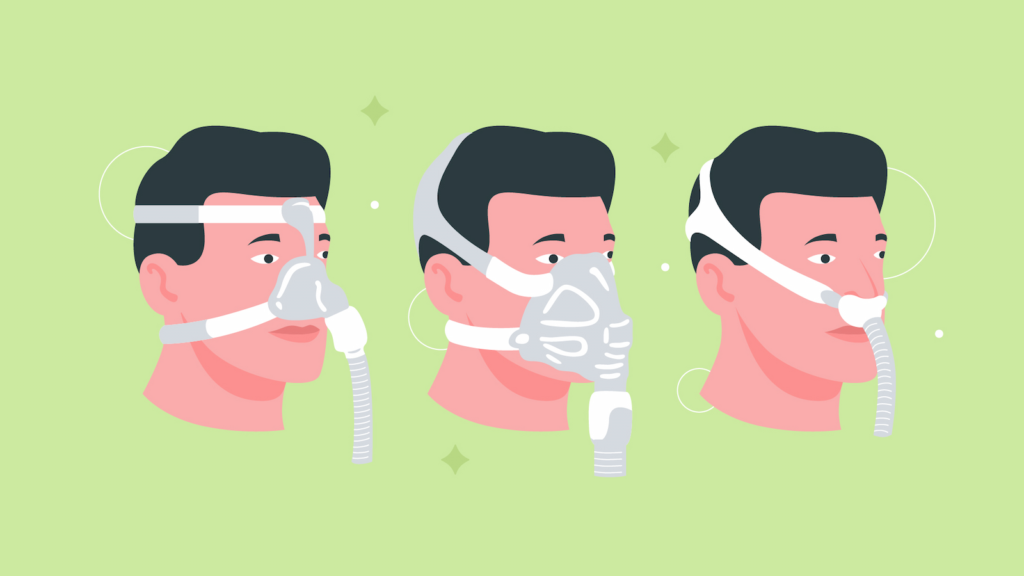
Most masks fit in one of three design categories:
- Full face masks: These masks provide complete coverage of the mouth and nose, covering much of the lower half of the face.
- Nasal masks: Cover a small region surrounding the nose (bridge to upper lip in most cases.)
- Nasal pillow masks: Sit below the base of the nose, creating a seal at the nostrils instead of around the nose.
There are also a few specialty designs available. However, their use is far less common today.
- Oral masks: Covers the mouth and lower regions of the face, leaving the nose exposed.
- Total face masks: Typically only used in special situations—such as when accommodating for claustrophobia—this mask covers the face completely, starting near the hairline and extending down below the chin.
- Hybrid masks: These aren’t a specific design but typically denote that the mask blends aspects of multiple designs. As such, they’re hard to categorize or make recommendations about the best hybrid CPAP masks because two hybrid masks might offer drastically different approaches and performance.
How Your Sleep Position Factors into Mask Choice
Sleep position makes such a broad impact on comfort and wearability, making it easier to use to make generalizations and recommendations than many other factors.
In essence, choosing the best CPAP mask based on your sleep position considers how many of the points above interact in subtle ways to create a very personal experience—all without having to compare each aspect individually.
The best CPAP mask for your needs will ultimately depend on a range of unique factors we can’t possibly know while making this guide. However, the following suggestions offer an excellent foundation for limiting your options and finding masks ideal for your needs.
The Best CPAP Masks for Back Sleepers
Back sleepers enjoy the most flexibility when it comes to choosing a mask design. Full-face masks are almost exclusively suited to sleeping on your back due to their extra bulk compared to nasal masks and nasal pillow masks. They also provide a strong seal for high-pressure prescriptions and ensure that mouth breathers receive adequate pressure.
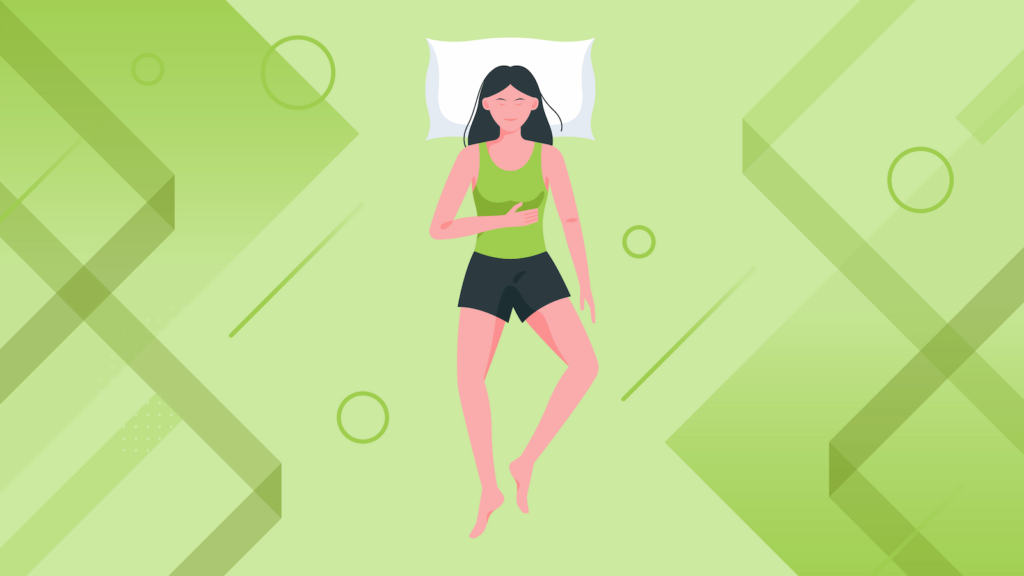
If you have a lower-pressure prescription or prefer a lightweight design, nasal masks and nasal pillow masks also work well when lying on your back. Choosing a model with a hose that attaches at the top can help to reduce bulk at the front of the mask and maximize vision for those who prefer to read, watch TV, or perform other leisure activities in bed while settling in for the night.
Popular CPAP masks for back sleepers include:
- Fisher & Paykel Simplus Full Face CPAP Mask
- ResMed AirFit F30 Full Face CPAP Mask
- ResMed AirFit N30 Nasal CPAP Mask (Fit Pack)
- Respironics Dreamwear Nasal CPAP Mask (Fit Pack)
- Respironics Comfort Gel Blue Nasal CPAP Mask
The Best CPAP Masks for Side Sleepers
Mask options start getting more specific when you switch to side sleeping. You’ll want a mask that won’t leave you tangled in the hose.
Smaller masks can also help to reduce pressure between your mask and the pillow, providing greater comfort and ensuring the mask stays tightly sealed throughout the night.
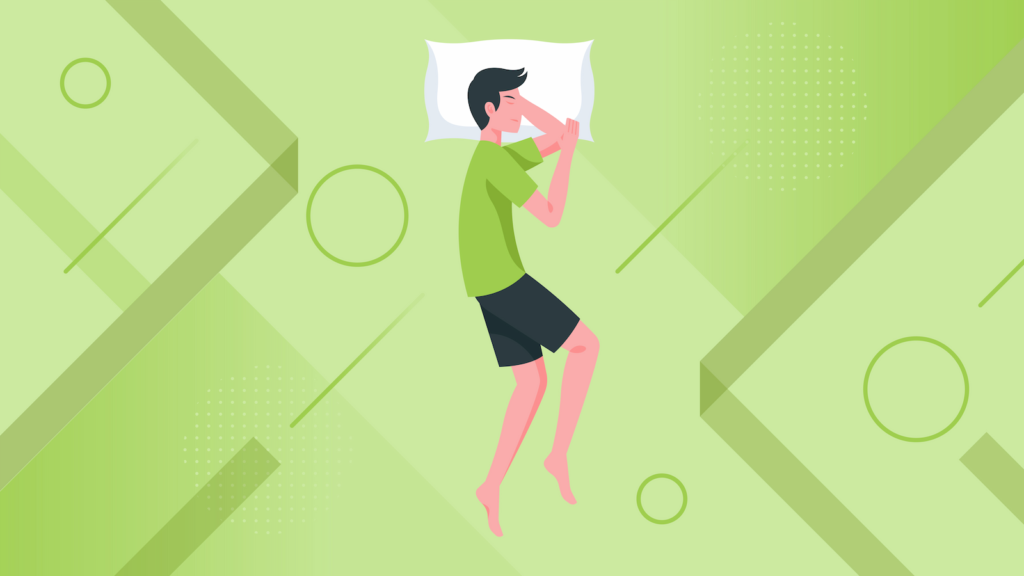
Hose attachment methods are slightly less important as long as you sleep facing your CPAP machine. However, attachment near the top of the head can provide additional flexibility if you toss and turn.
These factors make nasal masks and nasal pillow masks the most popular options for most side sleepers. They optimize pressure delivery while minimizing discomfort and staying in place.
Popular CPAP masks for side sleepers include:
- Fisher & Paykel Brevida Nasal Pillow CPAP Mask (Fit Pack)
- ResMed AirFit P10 Nasal Pillow CPAP Mask (“For Her” Model Here)
- ResMed AirFit N20 Nasal CPAP Mask
- ResMed Swift FX Nasal Pillow CPAP Mask
- Respironics Dreamwear Silicone Nasal Pillow CPAP Mask (Fit Pack)
The Best CPAP Masks for Stomach Sleepers
Masks that offer a comfortable stomach sleeping experience are a little trickier.
Obviously, full face masks are out. The same goes for masks with hose attachments at the mouth or nose. The last thing you want to do is spend the night lying face-first on a piece of plastic. Even if it’s flexible, the pressure will get annoying after a while, and it could cause issues with your mask’s seal, reducing the benefits of your PAP therapy.
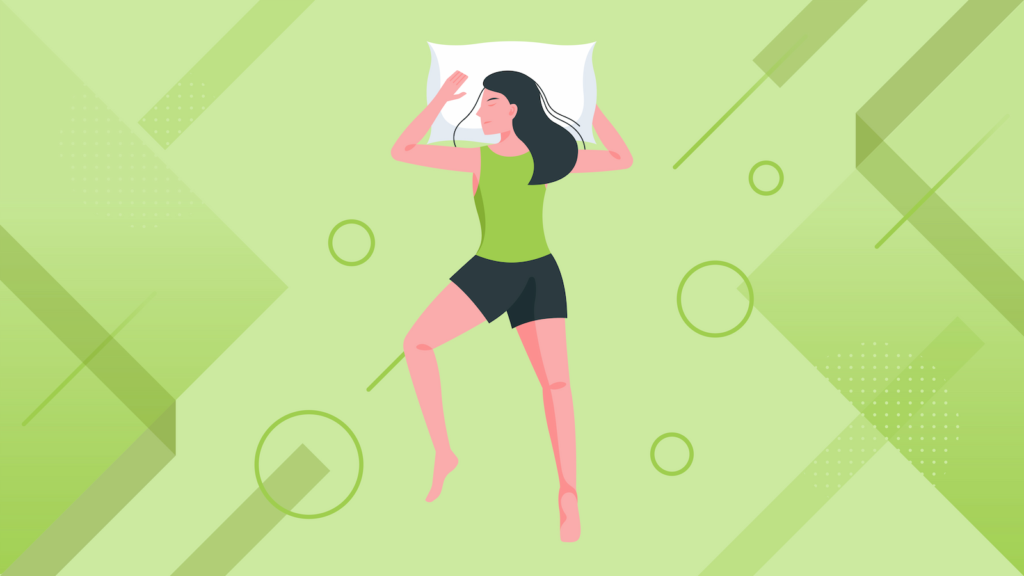
Ideally, you’ll want something with a hose attachment at the top of your head and soft headgear made of cloth or silicone. Nasal pillow masks tend to work best here as they place minimal bulk between your face and pillow.
Popular CPAP masks for stomach sleepers include:
- ResMed AirFit P30i Nasal Pillow CPAP Mask
- Respironics Dreamwear Silicone Nasal Pillow CPAP Mask (Fit Pack)
Summary
- Optimal mask choice requires considering a wide range of factors, including mask design, machine compatibility, sizing options, headgear design, visibility, tube connection locations, price, and even doctor recommendations.
- Common mask designs include full face masks, nasal masks, and nasal pillow masks.
- Oral masks, total face masks, and hybrid masks are also available but tend to offer the most benefit in very specialized or uncommon use cases.
- Limiting your mask options based on your sleep position is a simple way to easily account for a range of commonly connected factors without looking at each element one-by-one.
- Back sleepers have the most flexibility when choosing a mask with full face, nasal, and nasal pillow masks all working well.
- If you’re a mouth breather who sleeps on your back, full face masks can help to address pressure concerns.
- Side sleepers need masks with reduced bulk to keep things comfortable and avoid pressure between the mask and pillow. In most cases, nasal or nasal pillow masks are your best pick.
- If you sleep on your back or facing your CPAP machine, a front-facing host attachment will typically work well. However, hoses that attach at the top of your head can add flexibility (especially for those who toss and turn.)
- Stomach sleepers have the least amount of options as there are only so many ways to make a mask comfortable and effective when buried between your face and a pillow.
- In general, nasal and nasal pillow models with hoses that attach at the top of the head and feature soft silicone or fabric headgear with minimal hard plastic work best.
With a comprehensive selection from industry-leading names such as Respironics, ResMed, and Fischer & Paykel, CPAPSupply.ca’s mask selection can help you quickly find the best mask option for your needs. As Canada’s leading online CPAP supply store in customer satisfaction, we pride ourselves in helping take the hassle out of ordering CPAP equipment and accessories, allowing you to rest easy and enjoy the benefits of your CPAP therapy! Contact us today or browse our selection to discover options suitable for your needs.
References
- The Mayo Clinic: Slide Show: Which CPAP Masks Are Best for You?
- The American Association of Sleep Technologists: Which CPAP Mask is Best for Your Patient? Pros & Cons of Various Mask Types
- ResMed US: Different Types of CPAP Masks: Which is Right for You?
- Healthsqyre: The Ultimate Guide to Buying a CPAP Mask
- Everything CPAP: Which Type of CPAP Mask is Best for Me?
- Alaska Sleep Clinic: Choosing the Best CPAP Mask: Pros, Cons, & Other Considerations
- Sleepapnea.org: Which CPAP Mask is Best for Me?

